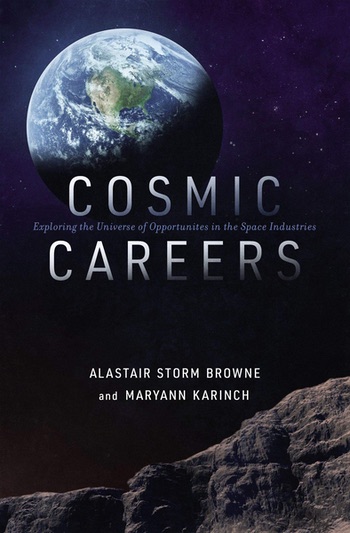Review: Cosmic Careersby Jeff Foust
|
| You probably have better odds today getting a job in the space industry as a barista than as a bear biologist. |
Authors Alastair Storm Browne and Maryann Karinch paint a picture of space settlement and development familiar to members of the National Space Society or similar advocacy organizations, including asteroid mining, salvage of space junk, space colonies and bases on the Moon and Mars. There is some discussion of nearer-term activities, like ongoing research on the International Space Station and the promise of space tourism, but little else about ongoing ventures that are working on rockets, satellites and the services they enable. There’s far more discussion about asteroid mining, including, peculiarly, mining of rare earth elements, something that even advocates of asteroid mining believe is decades away.
A one-page appendix lists some of the “space-related jobs and careers” mentioned in the book. There are some obvious ones, like aerospace engineer and mechanical engineer, but there is also archaeologist, space debris collector, and “bear biologist.” Perhaps one day space debris collector will be a burgeoning field (even if the work is done robotically), but you probably have better odds today getting a job in the space industry as a barista than as a bear biologist.
There is a hidden gem in the book, though. One chapter profiles three lesser-known startups in the space industry: Starsys Research, which made mechanisms for spacecraft like the Mars Exploration Rovers and is now part of Sierra Nevada Corporation; SEAKR Engineering, which makes spacecraft electronics; and Orbital Micro Systems, which is working on weather satellite systems. Executives of these companies discuss some of the lessons they learned, which the book synthesizes into common traits for startups. More of this, including discussions with startups that failed, would have been more useful than discussions of asteroid mining.
Cosmic Careers offers an ambitious vision of humanity living and working in space, but is less useful as a guide for those looking to get into the industry now, either as recent graduates or people looking to make a mid-career change. For those people, you’re better off checking the job listings for engineers, software developers, and even cooks. After all, you can’t launch a rocket on an empty stomach.
Note: we are temporarily moderating all comments submitted to deal with a surge in spam.
